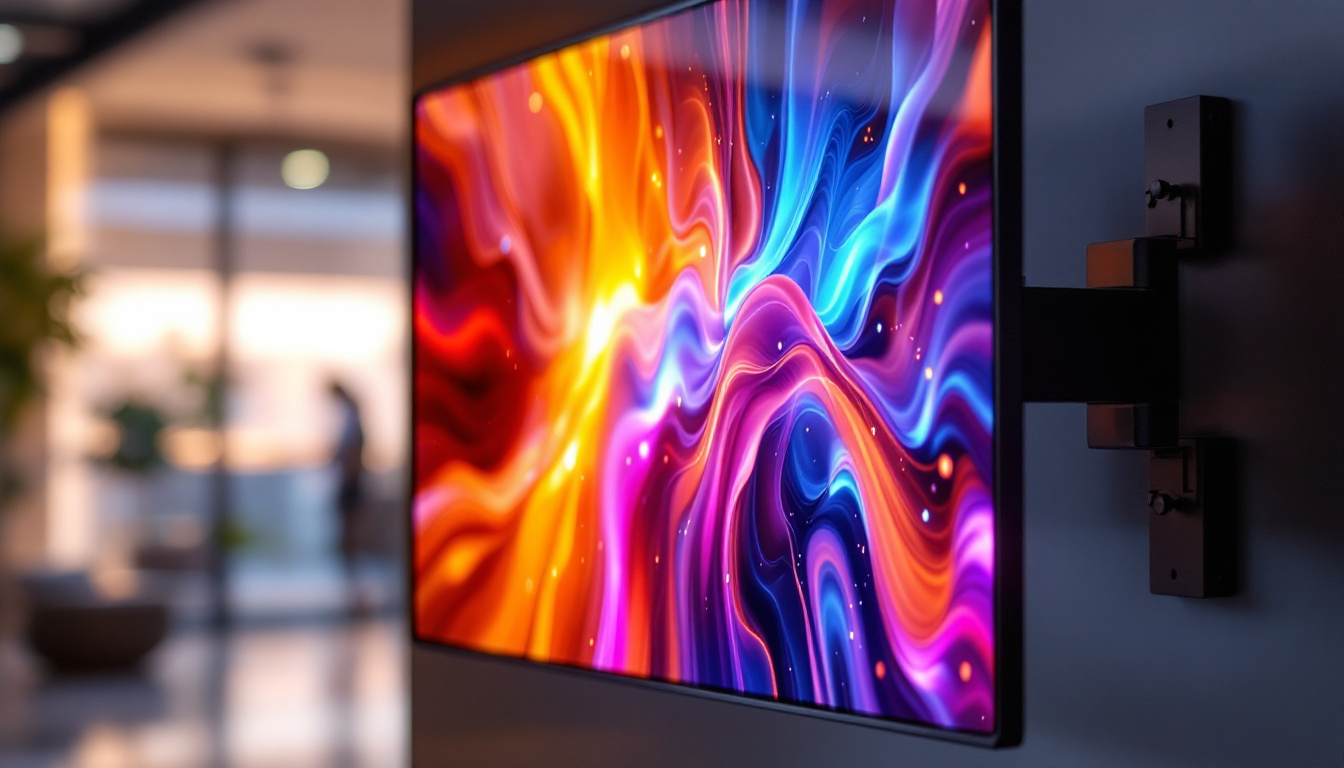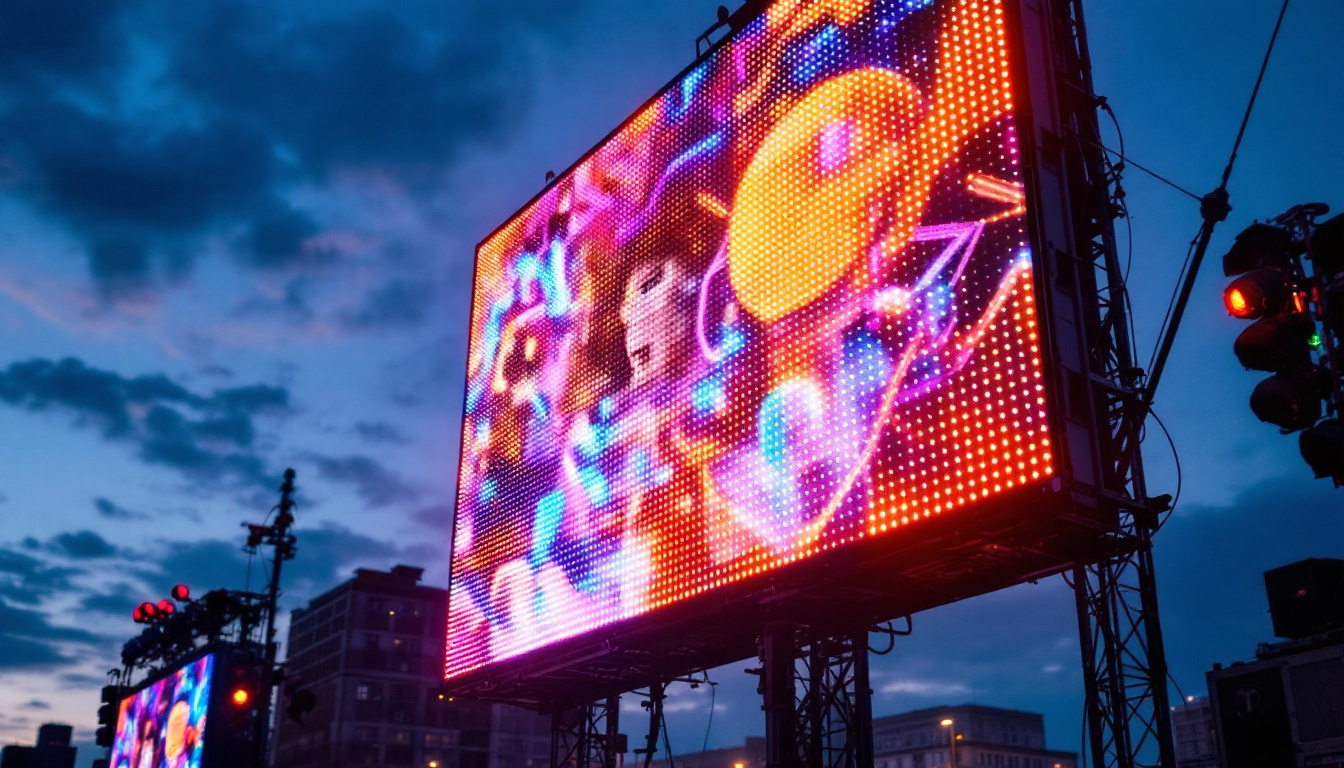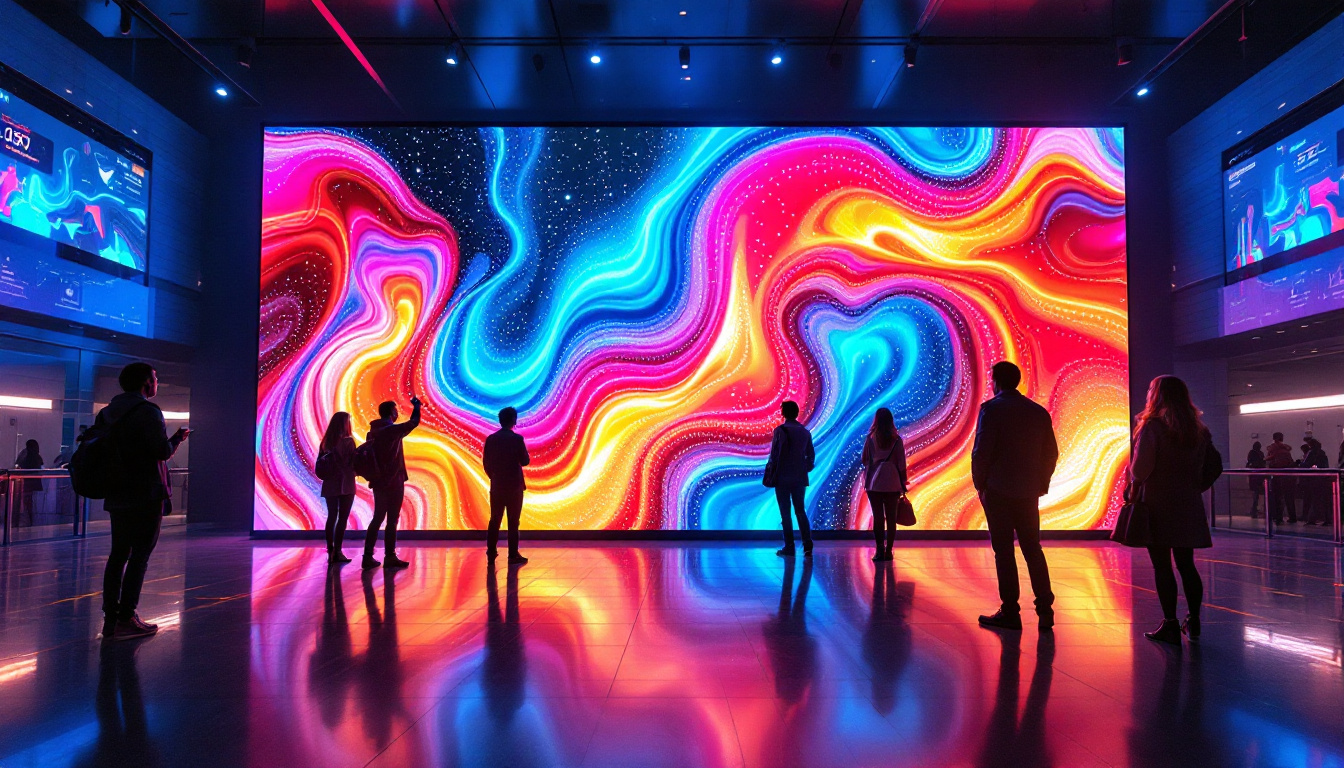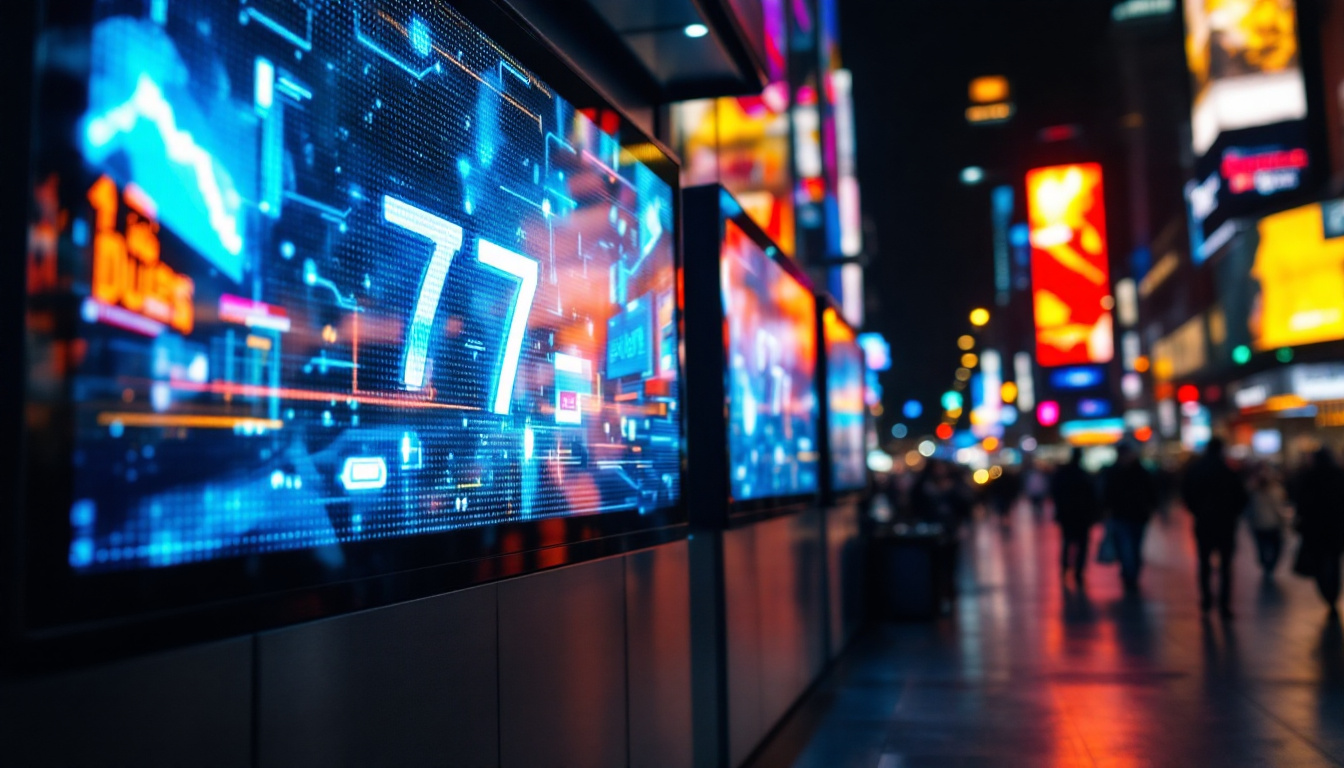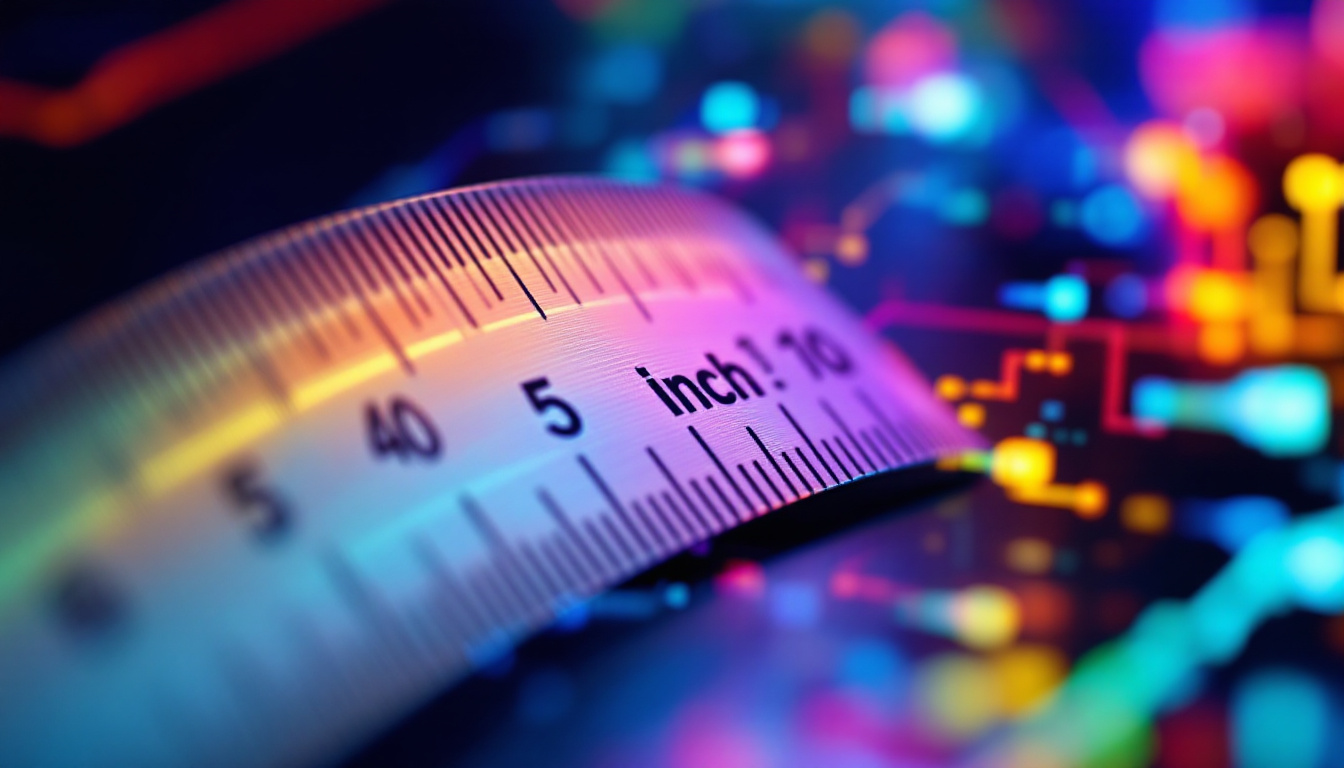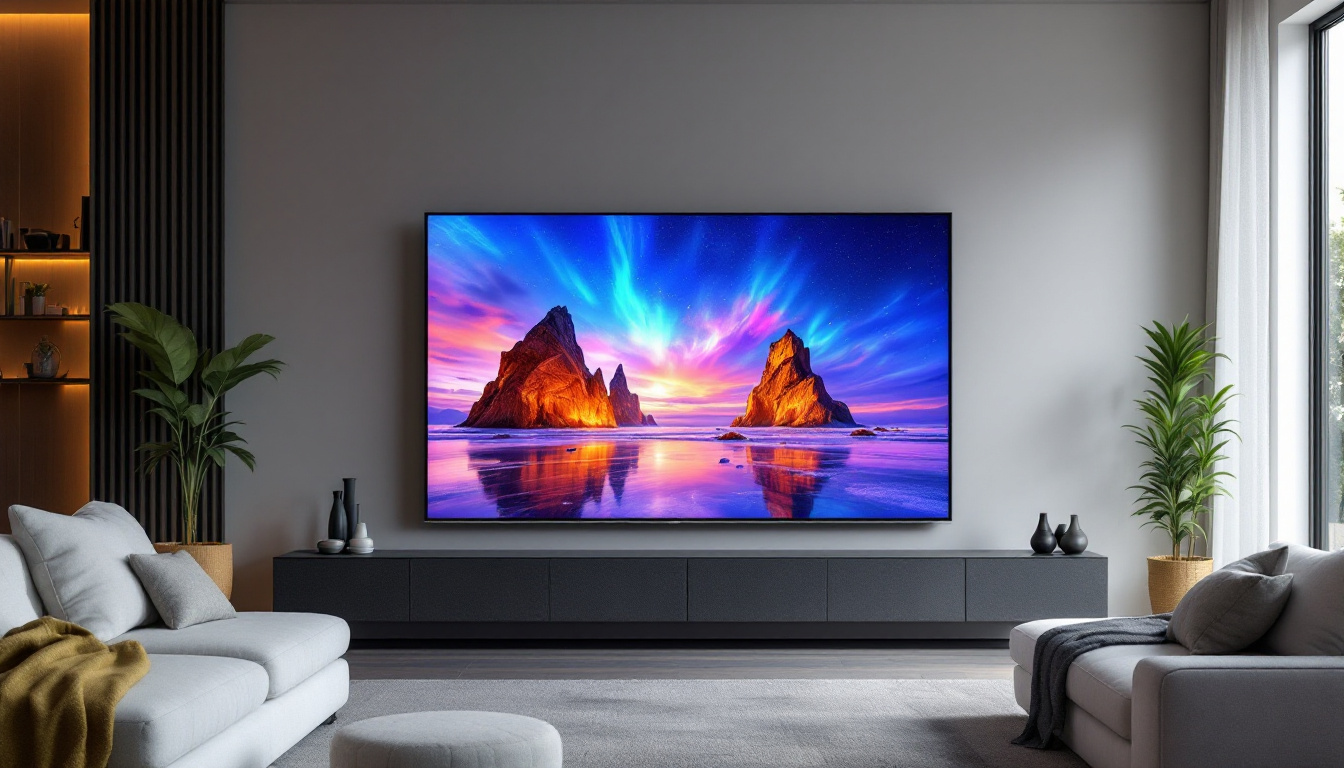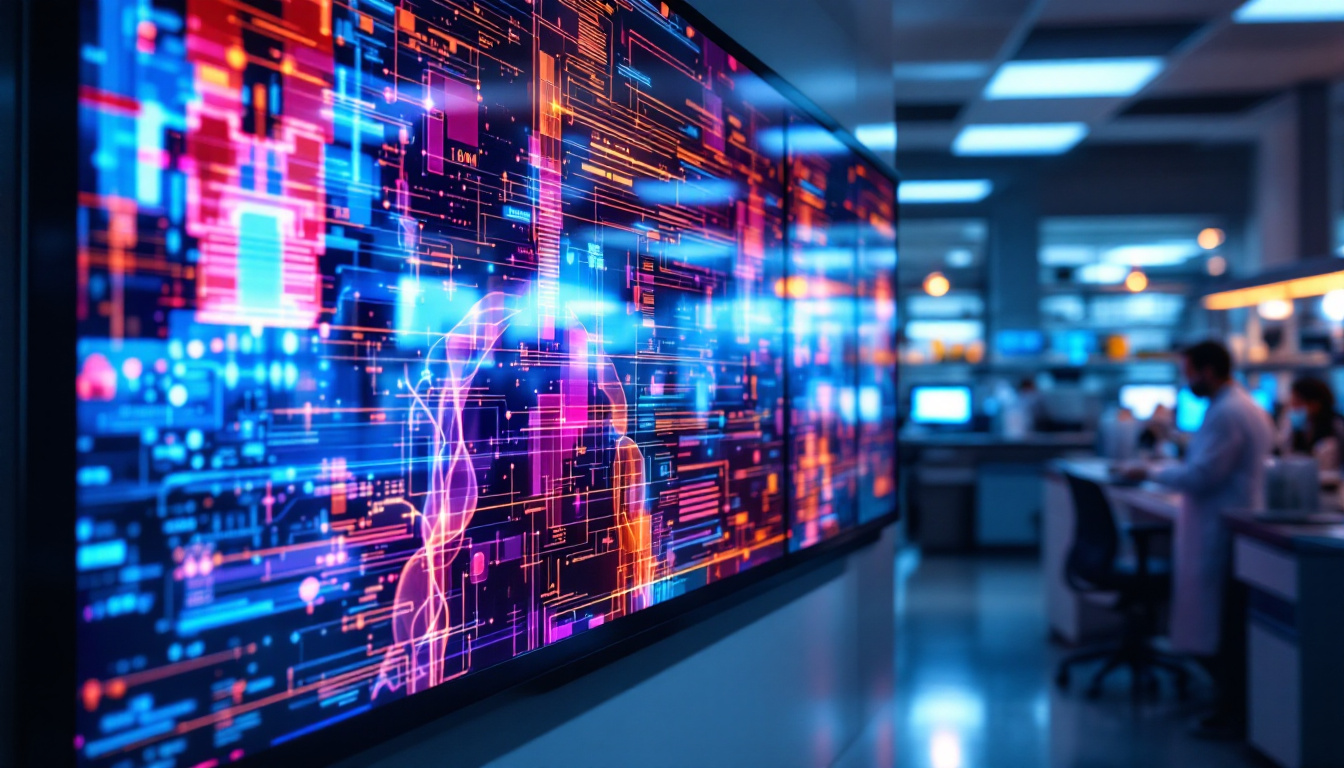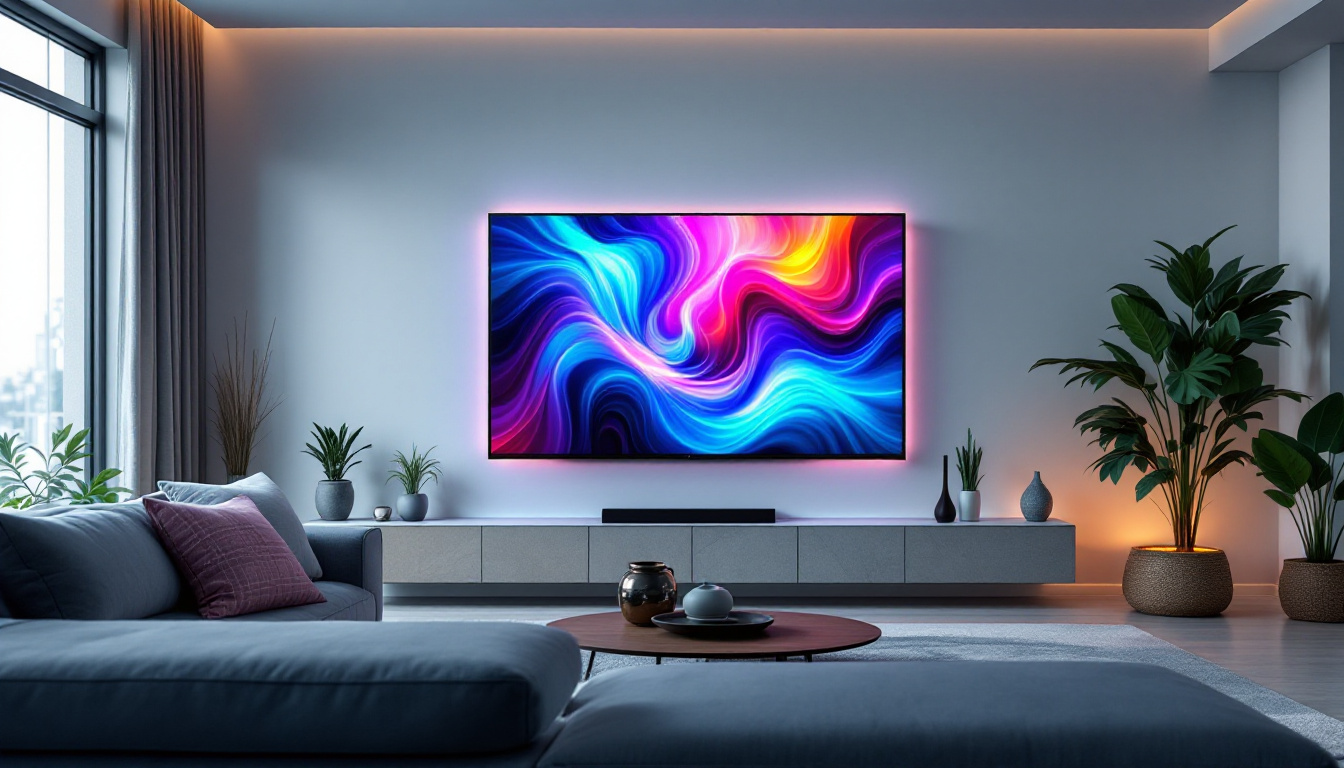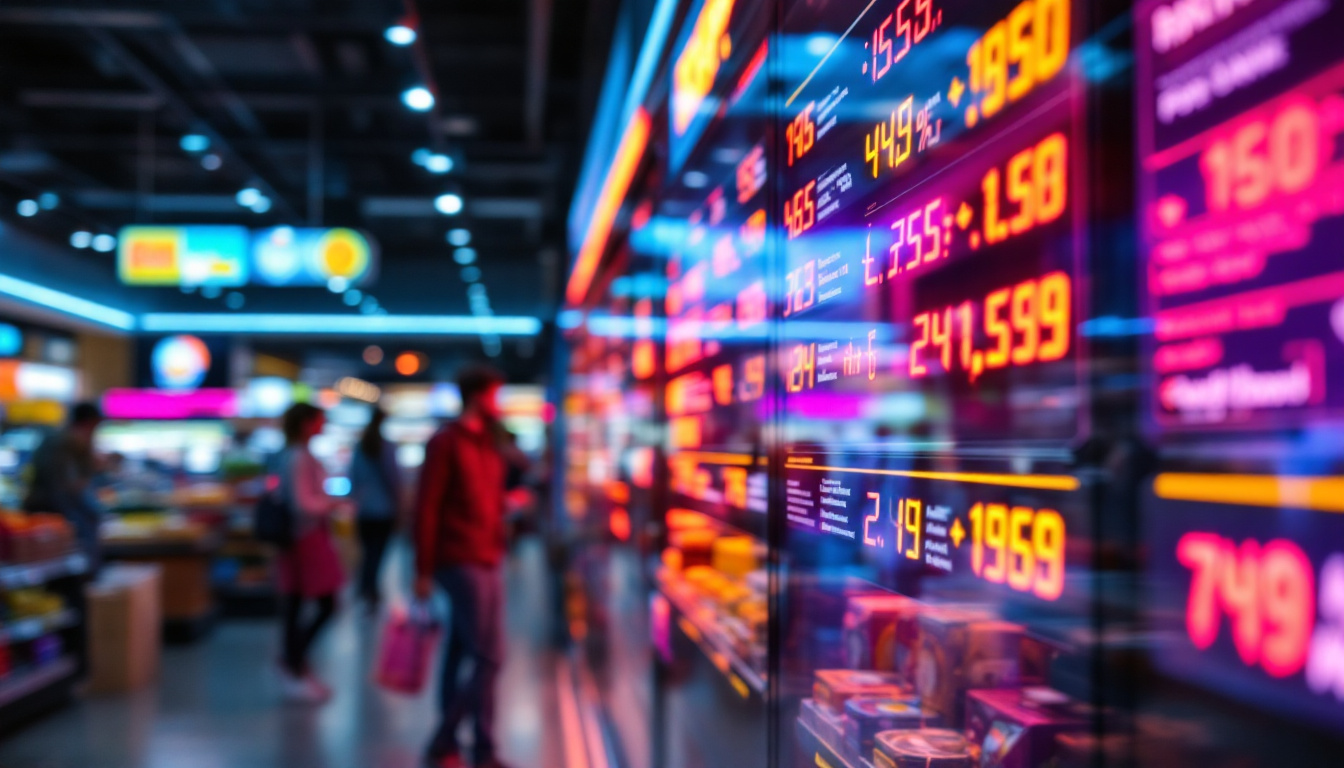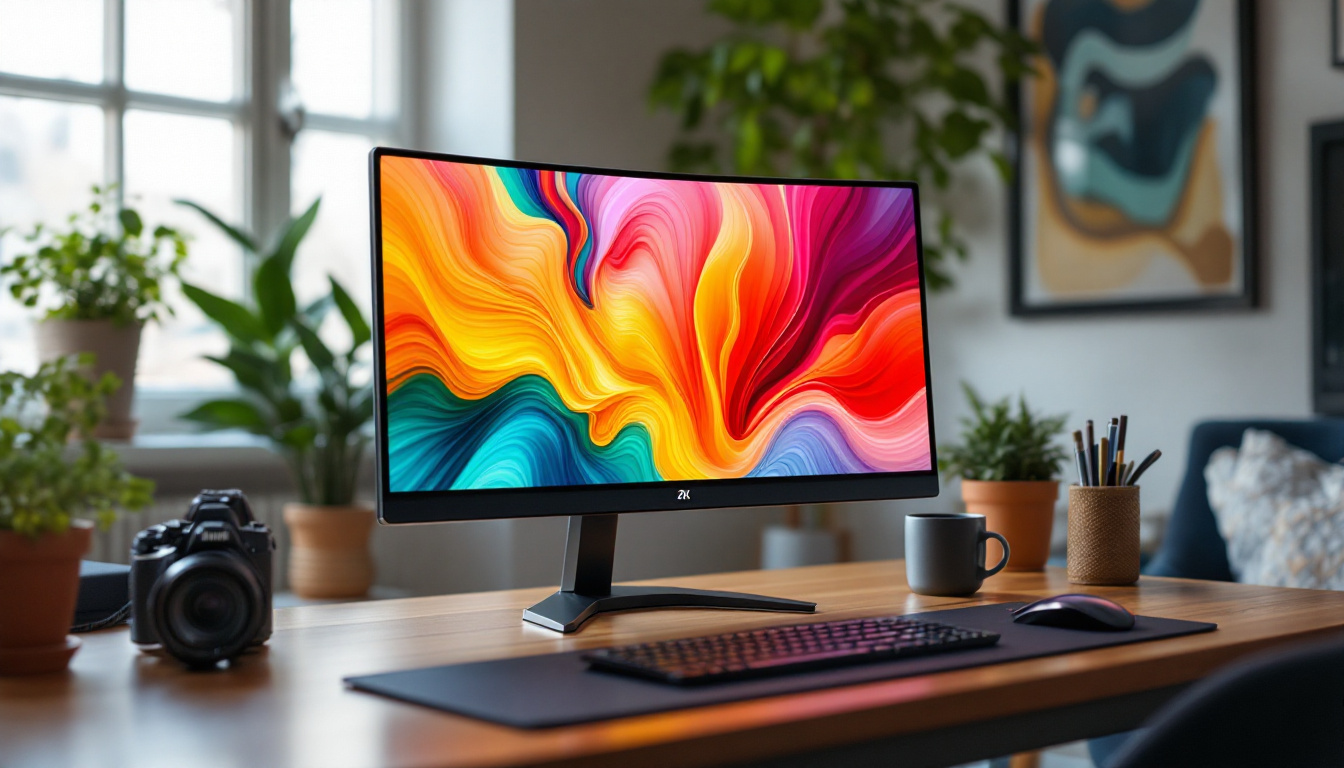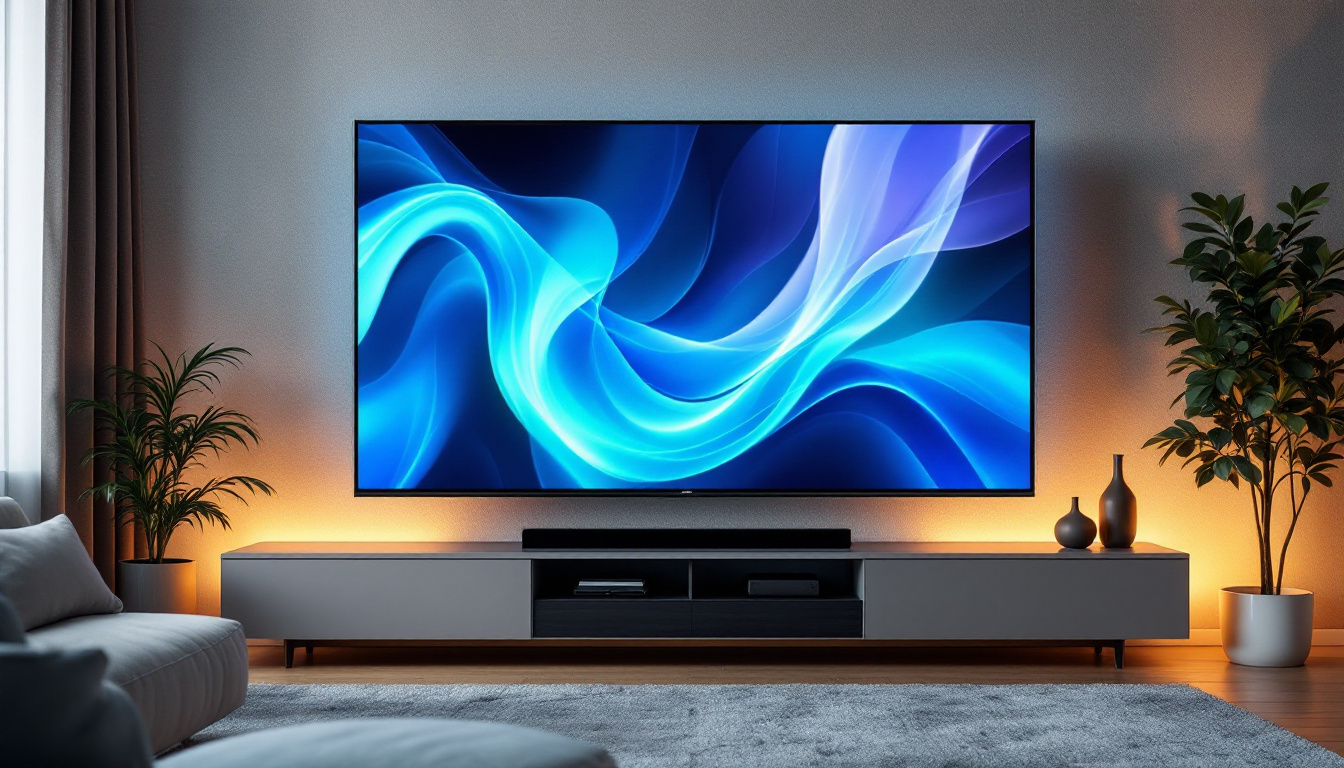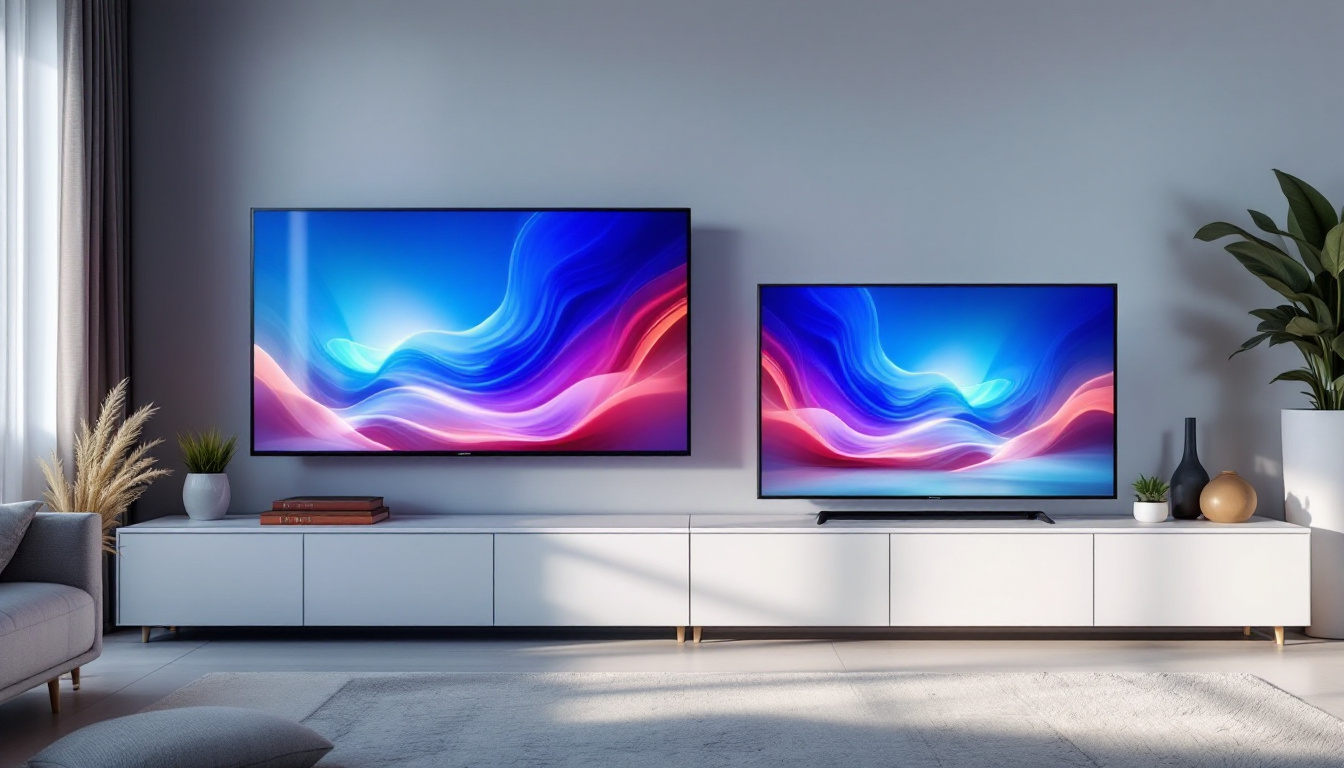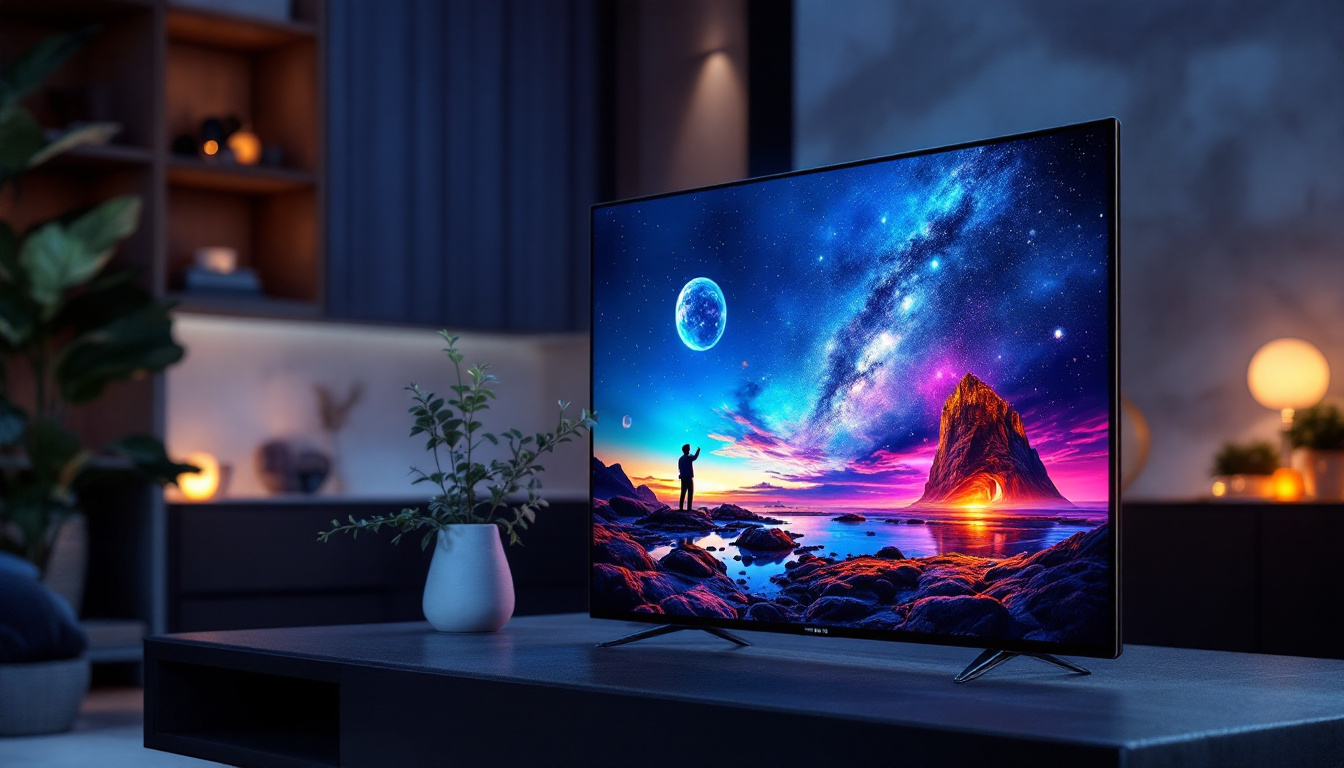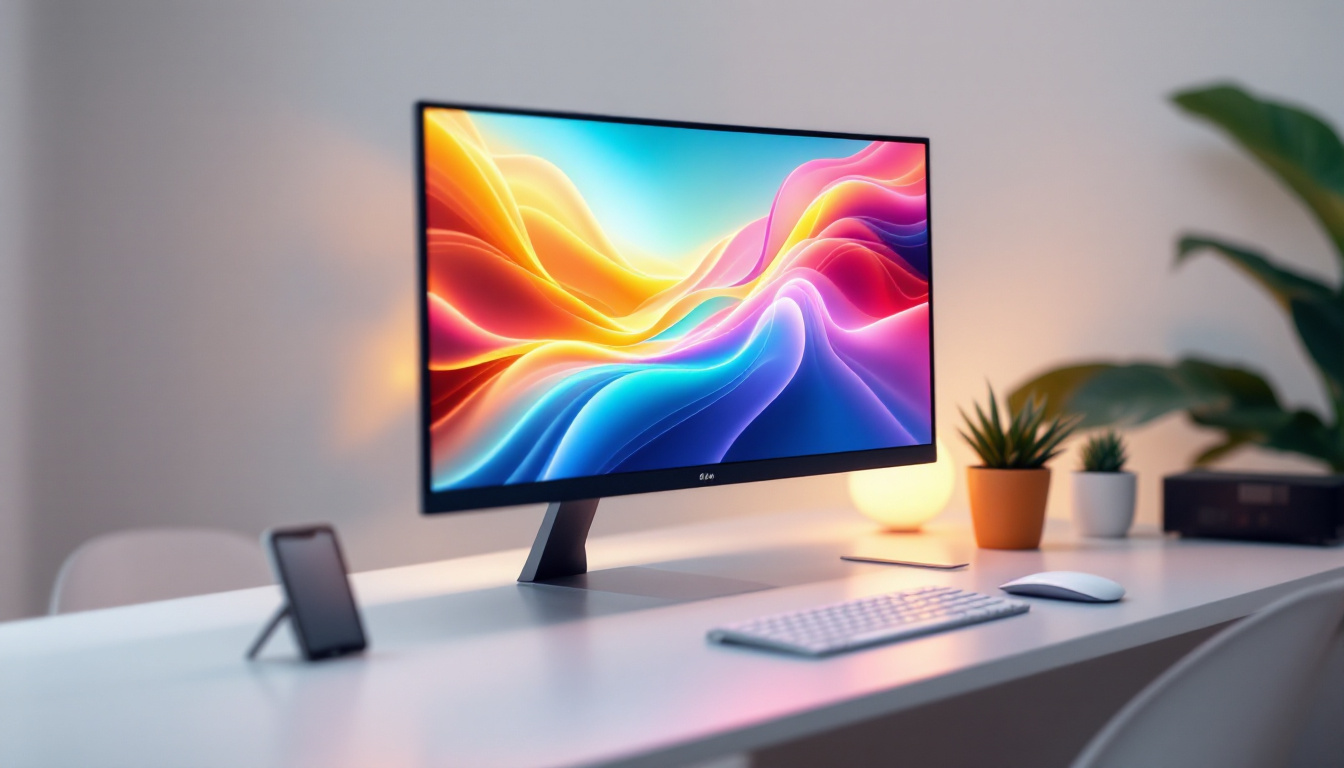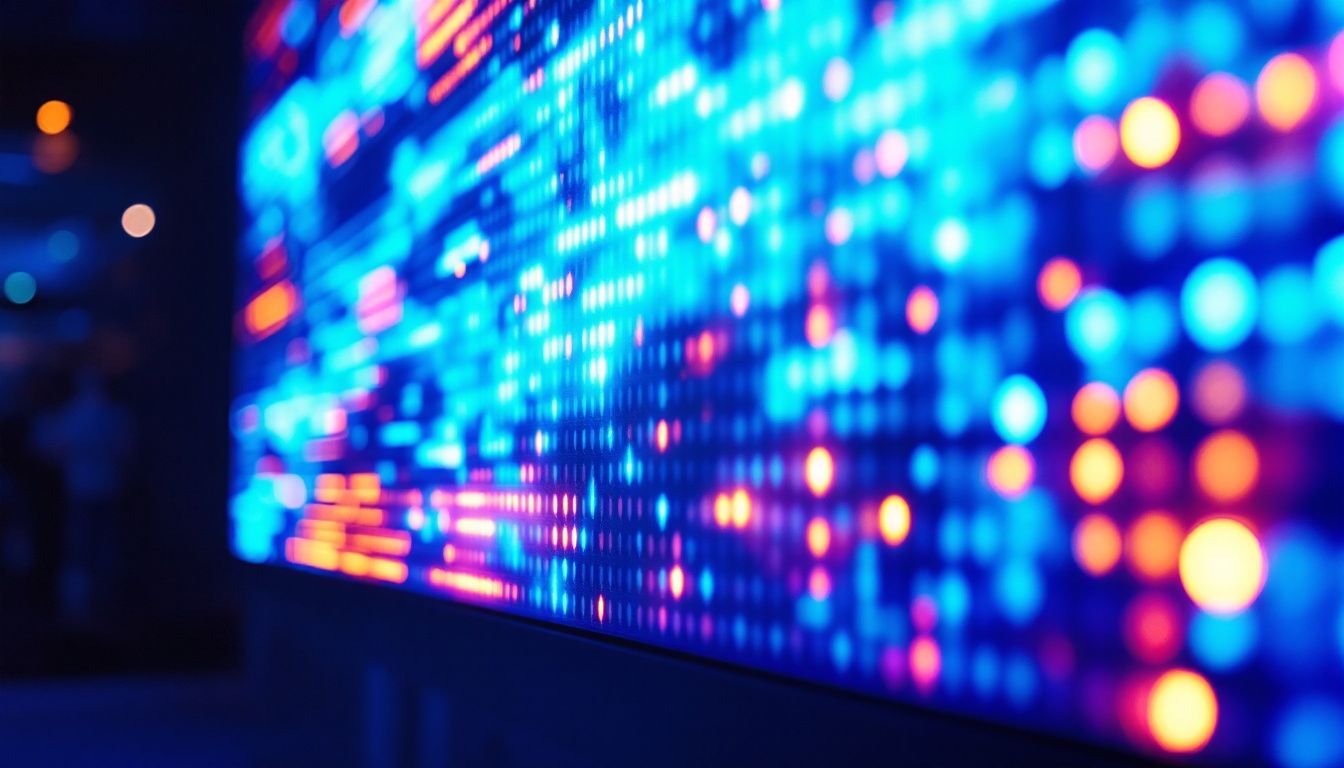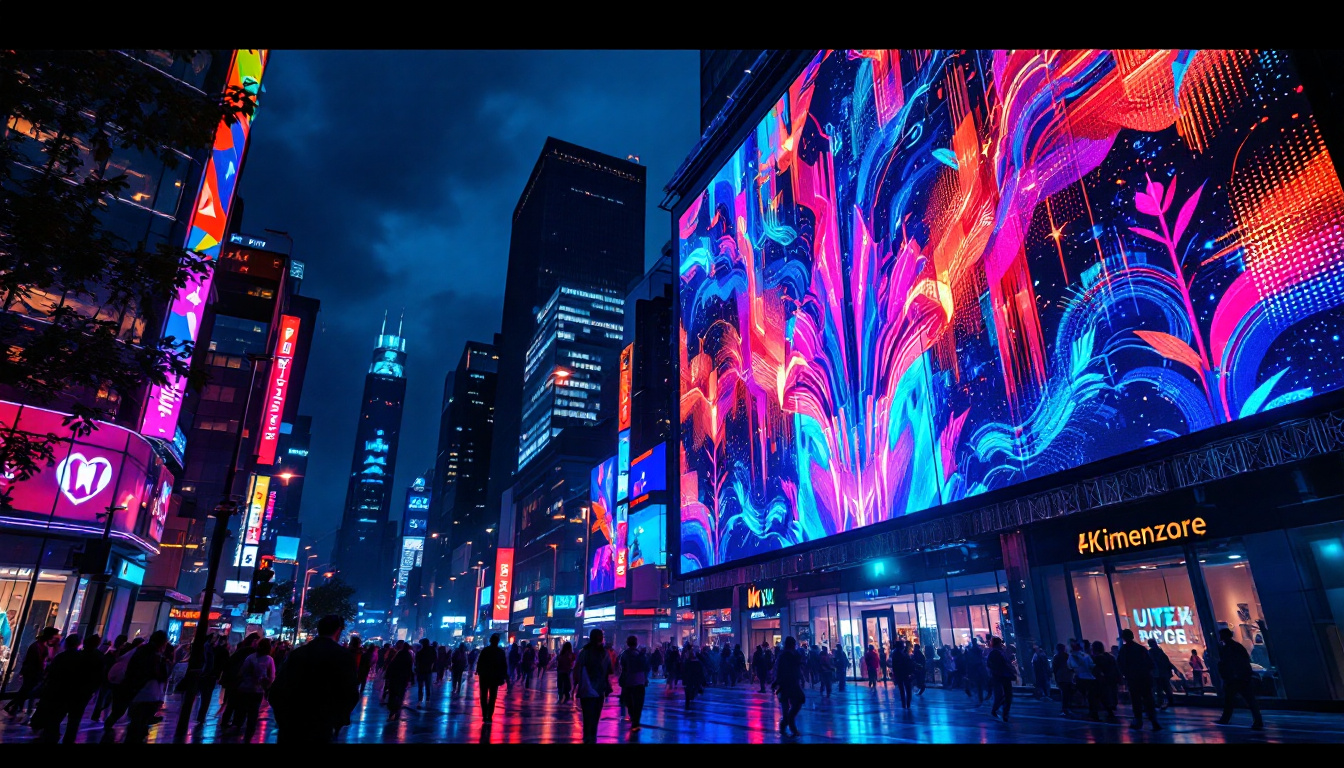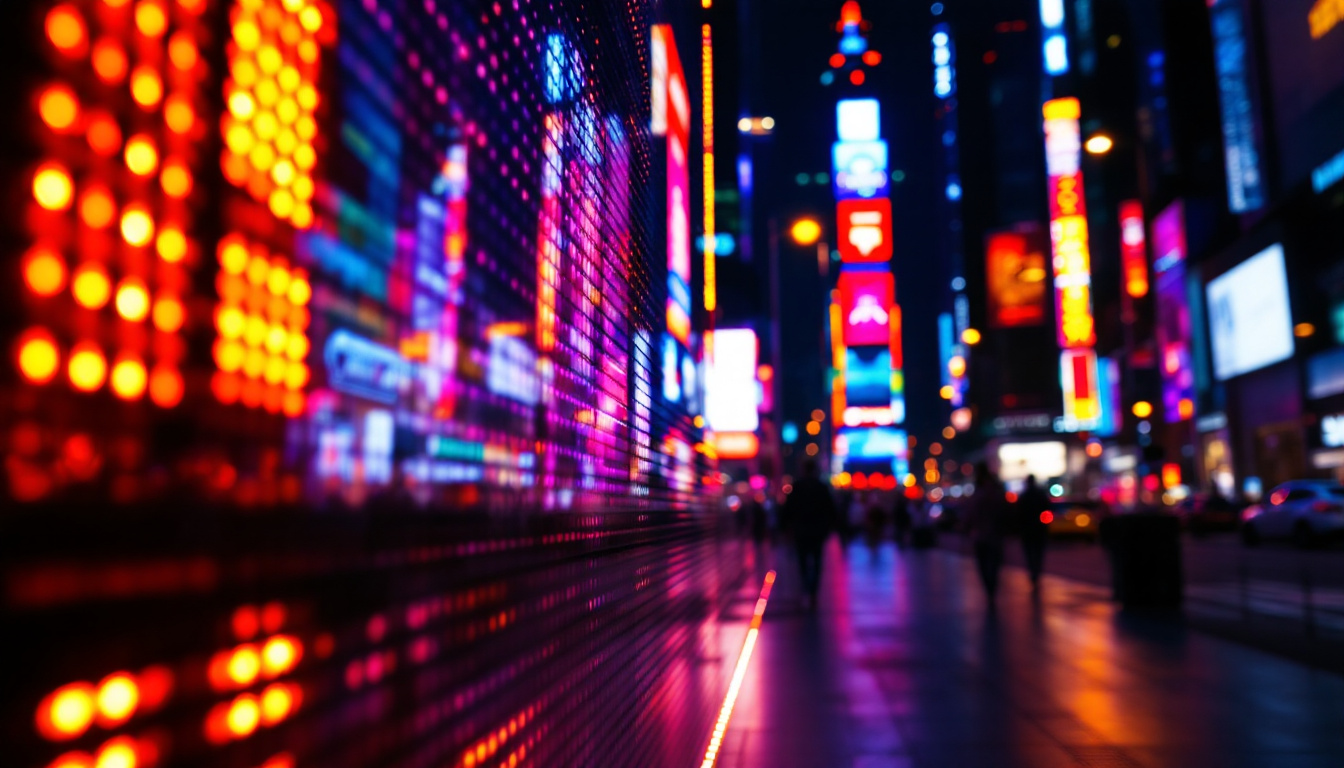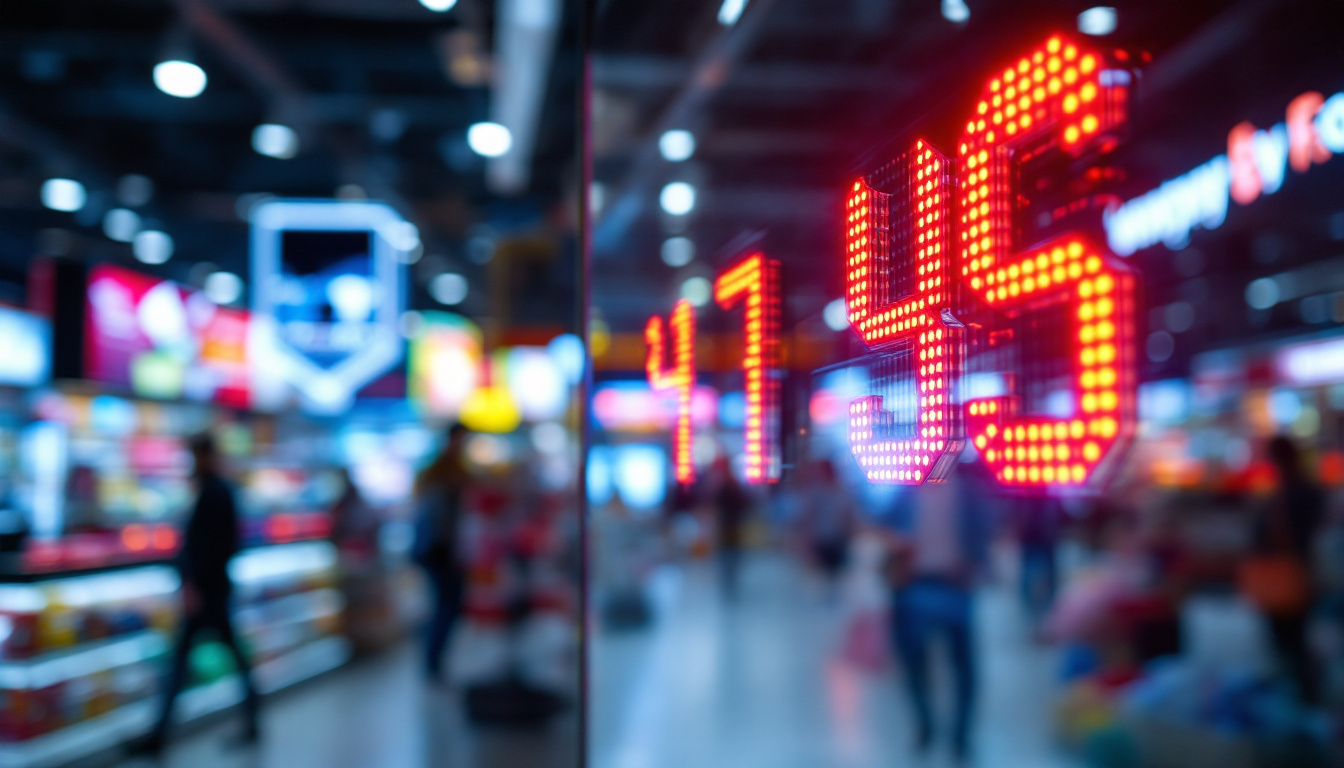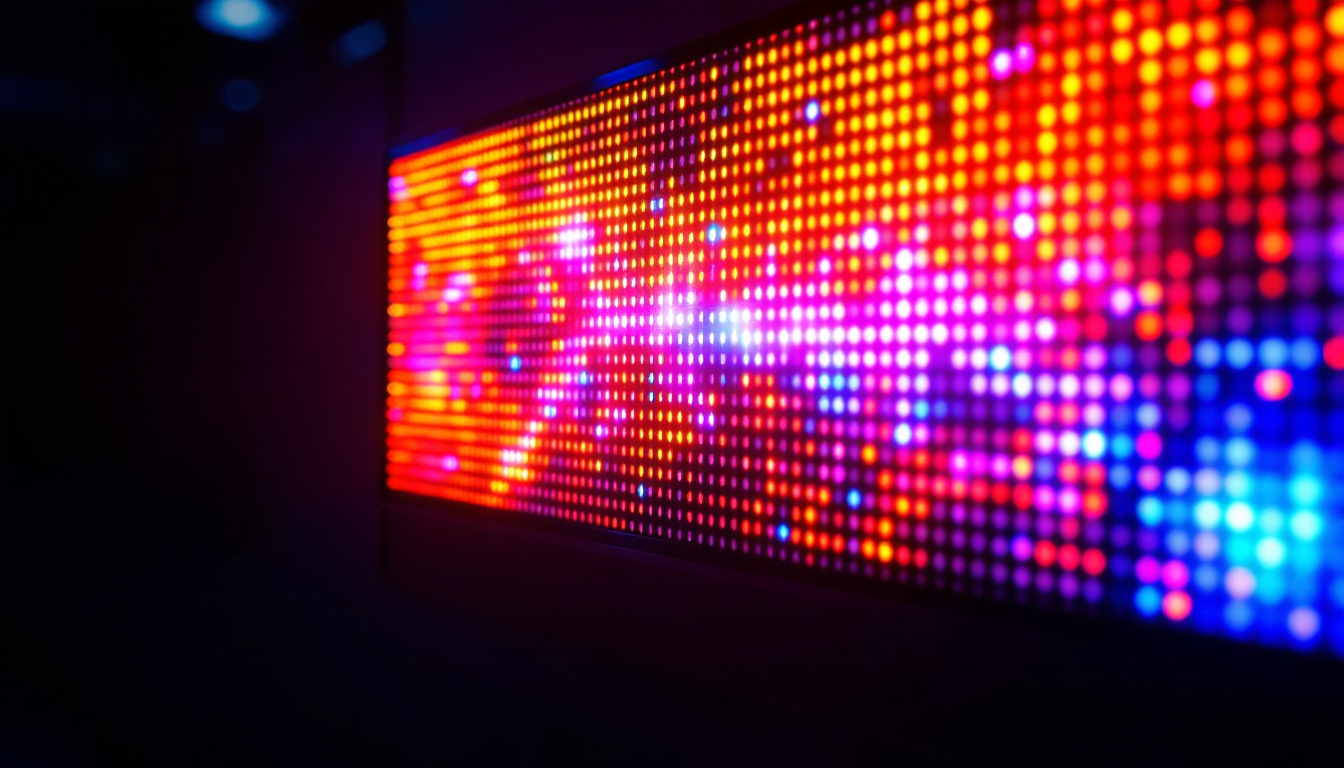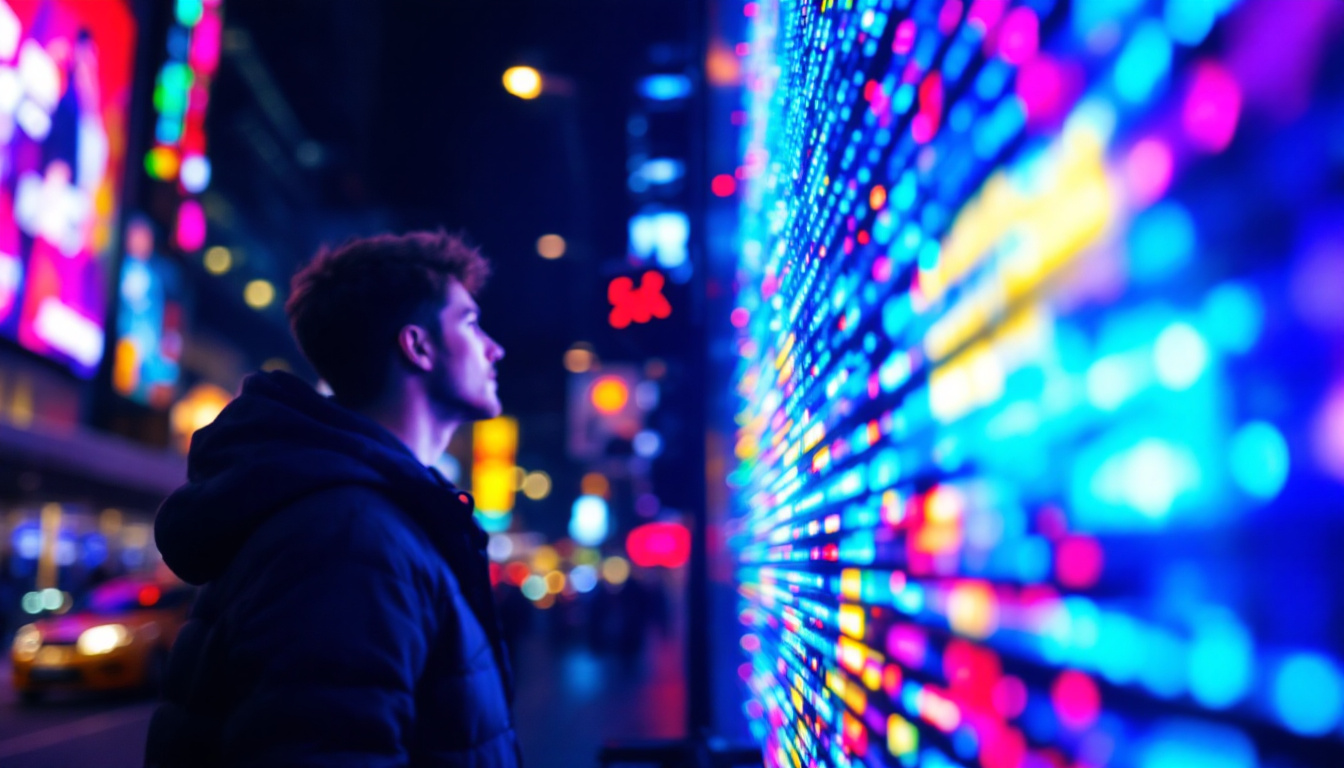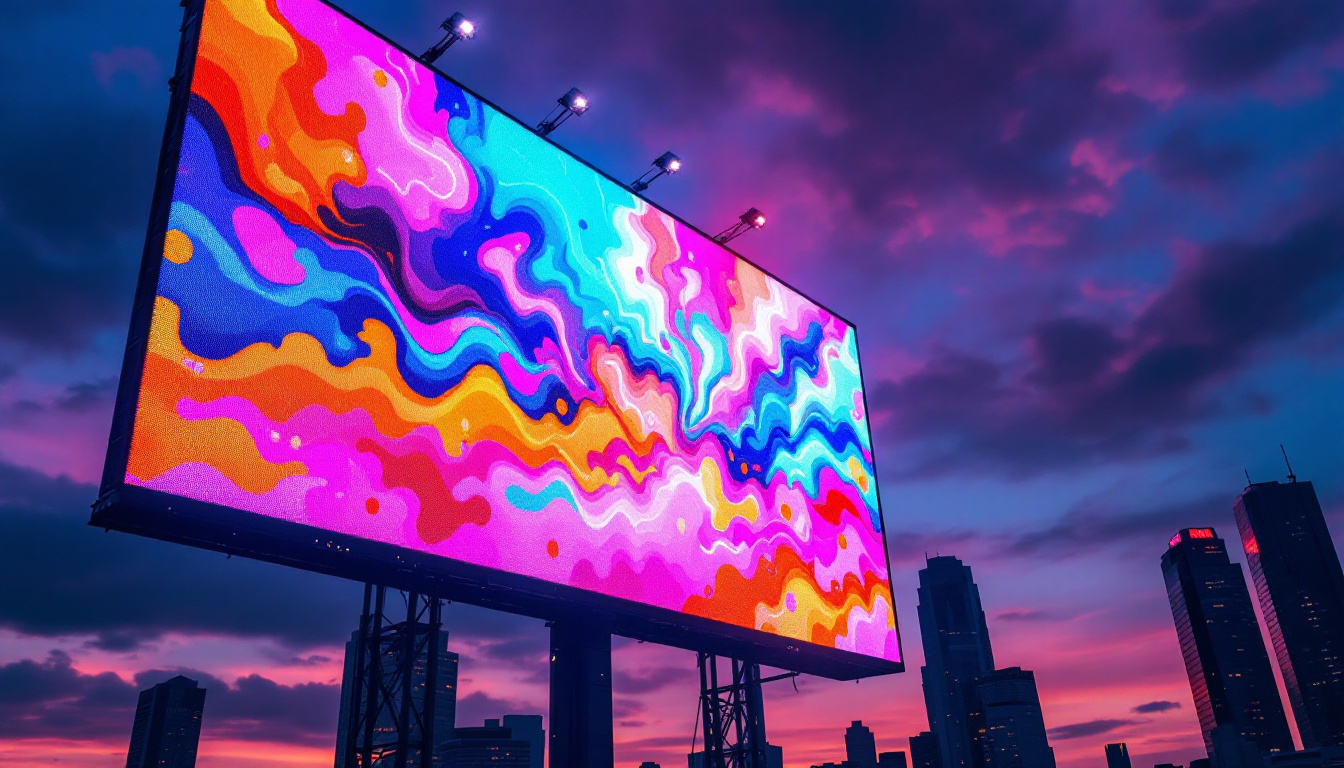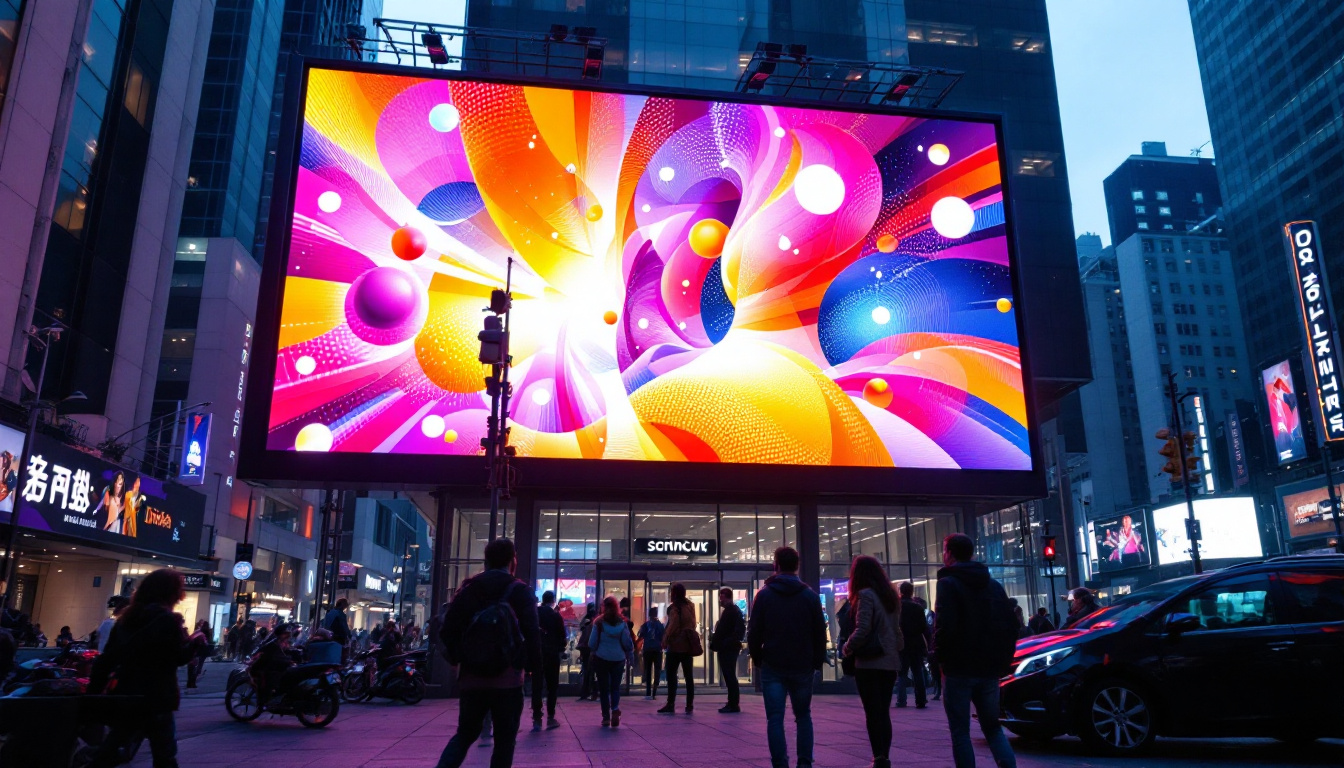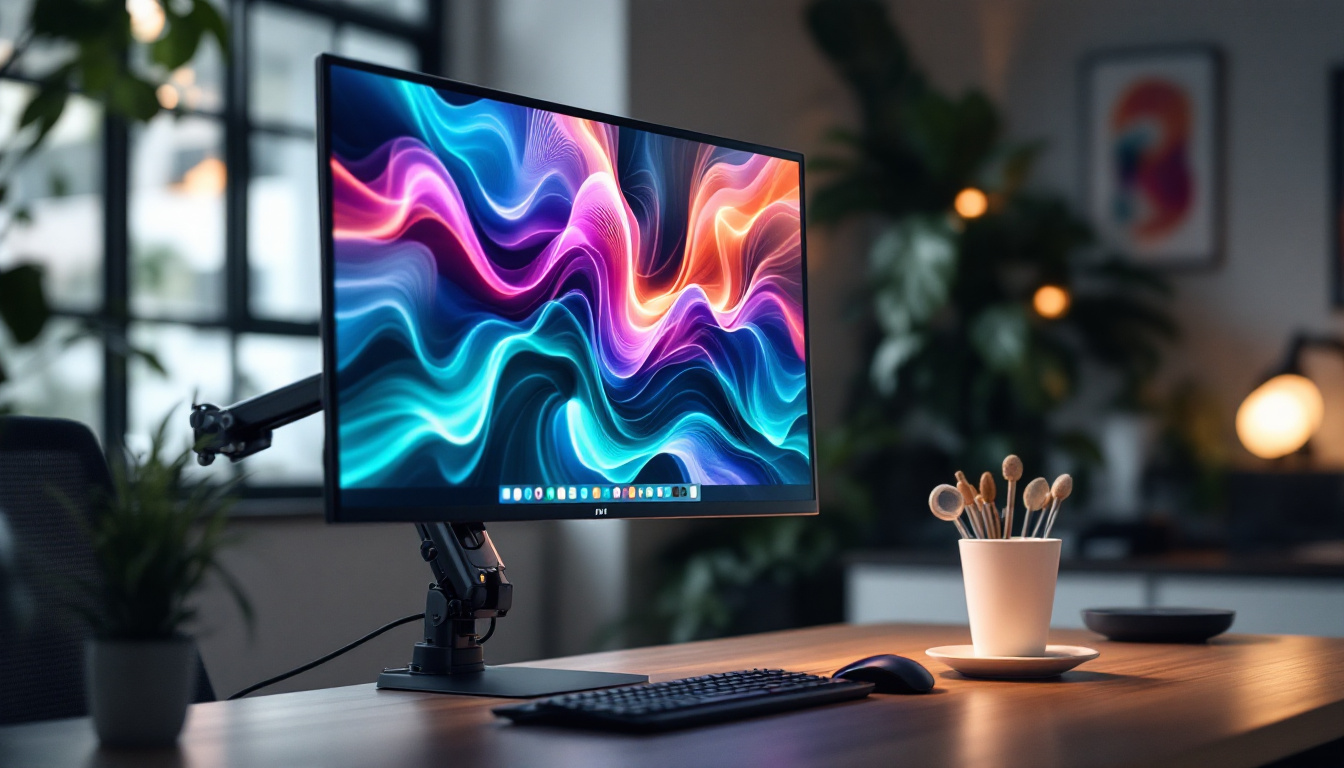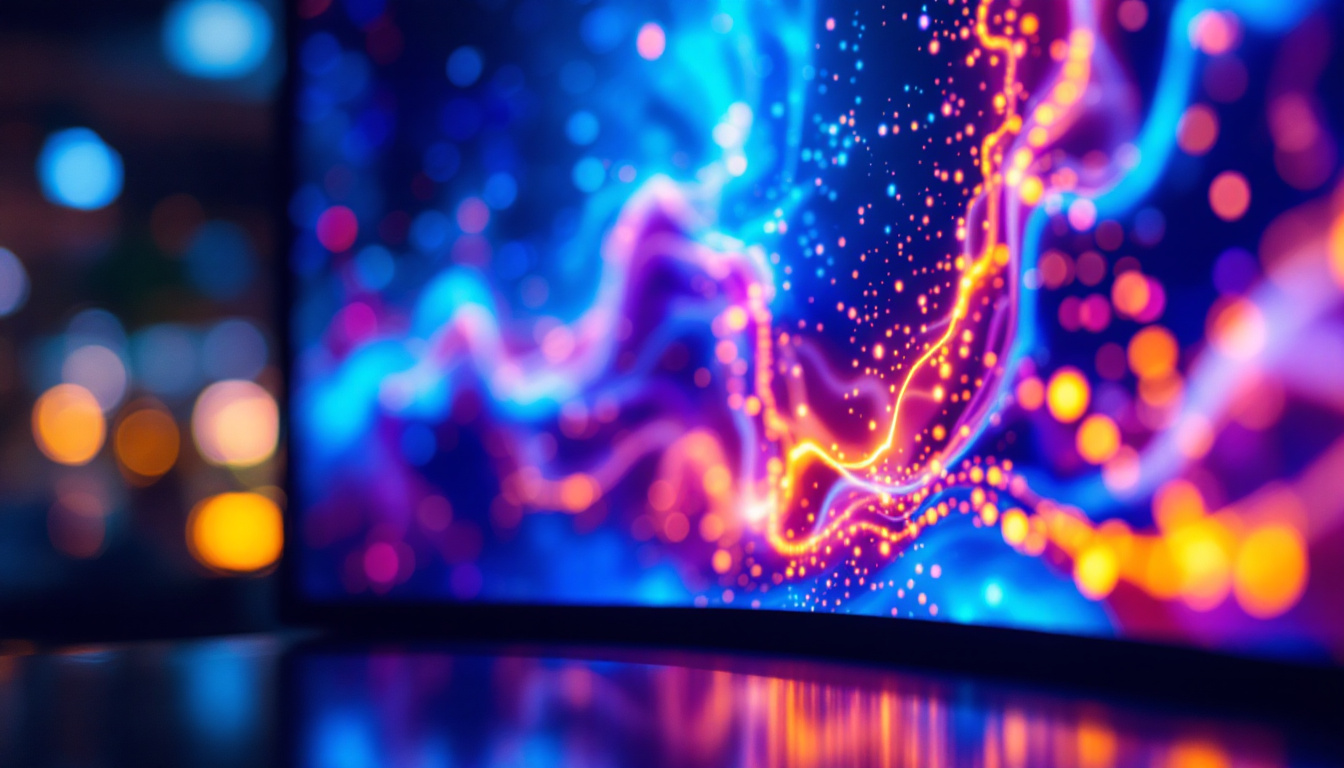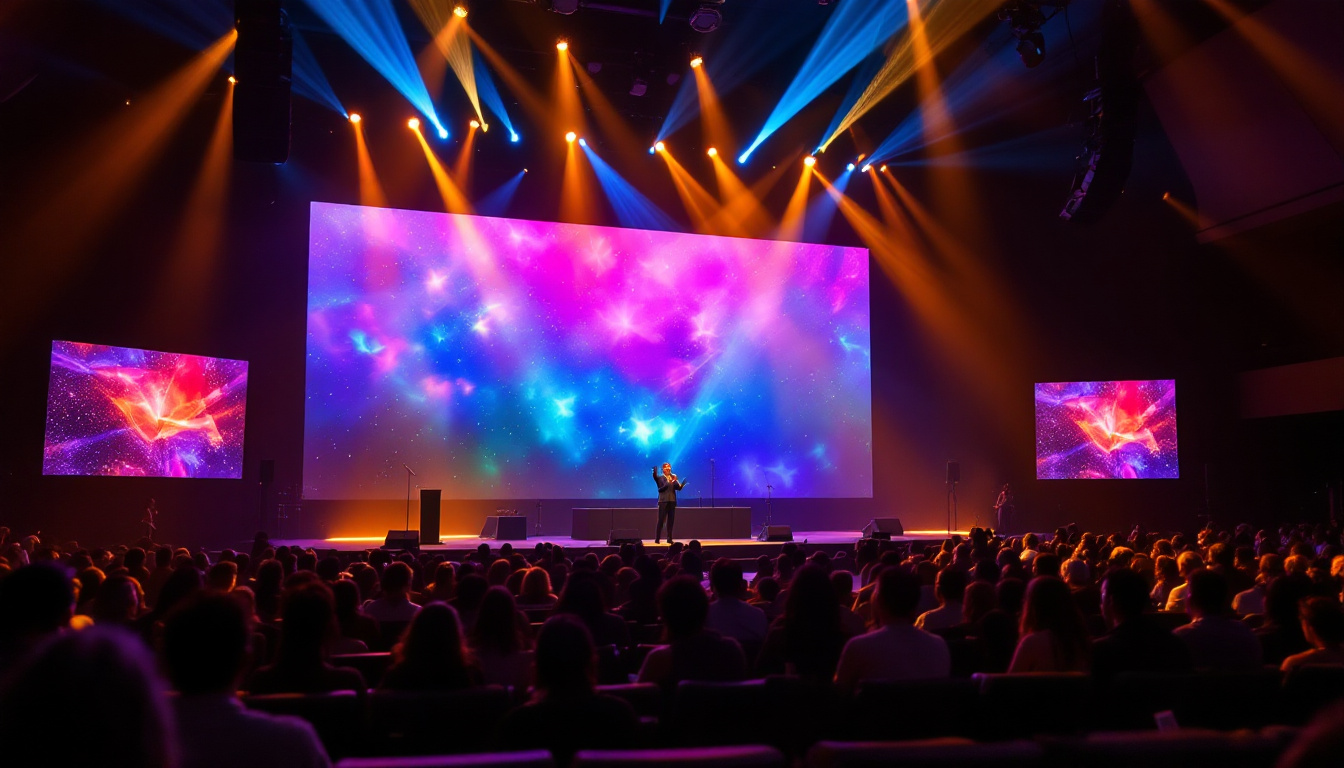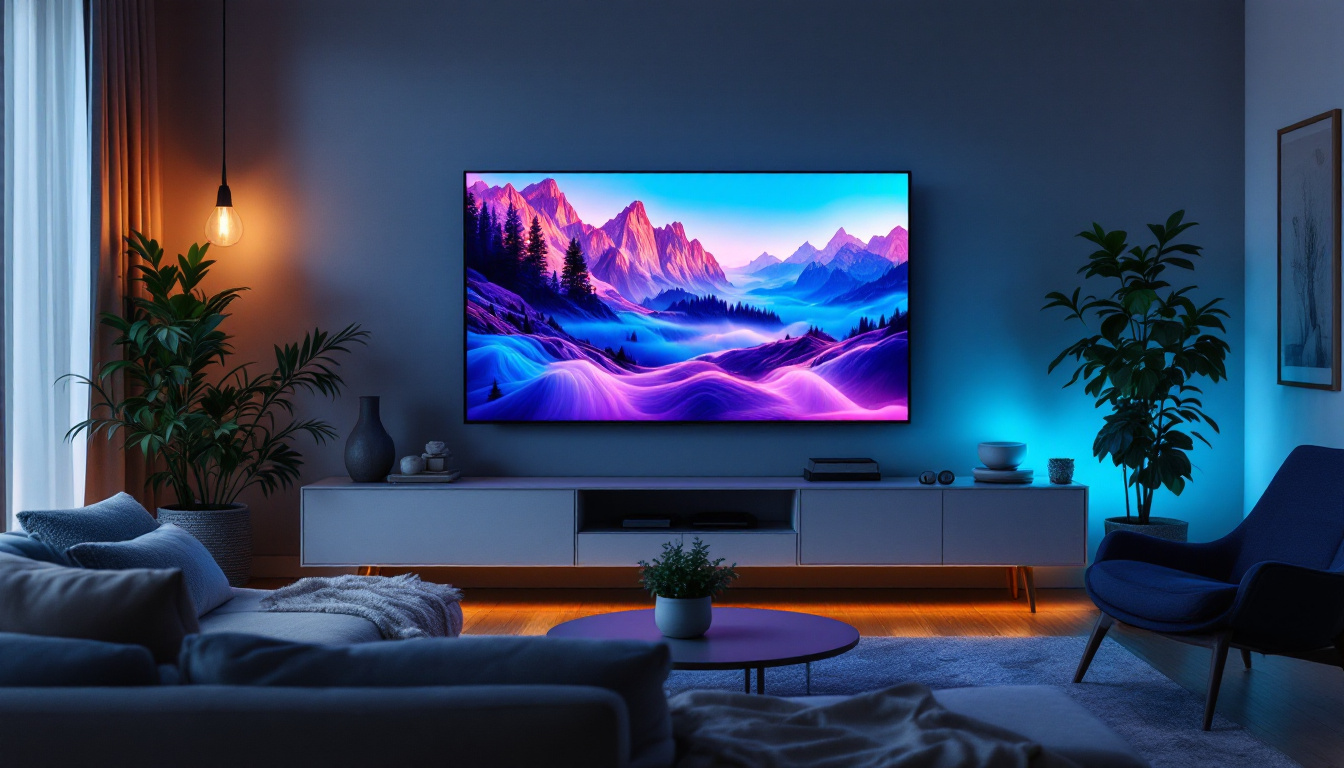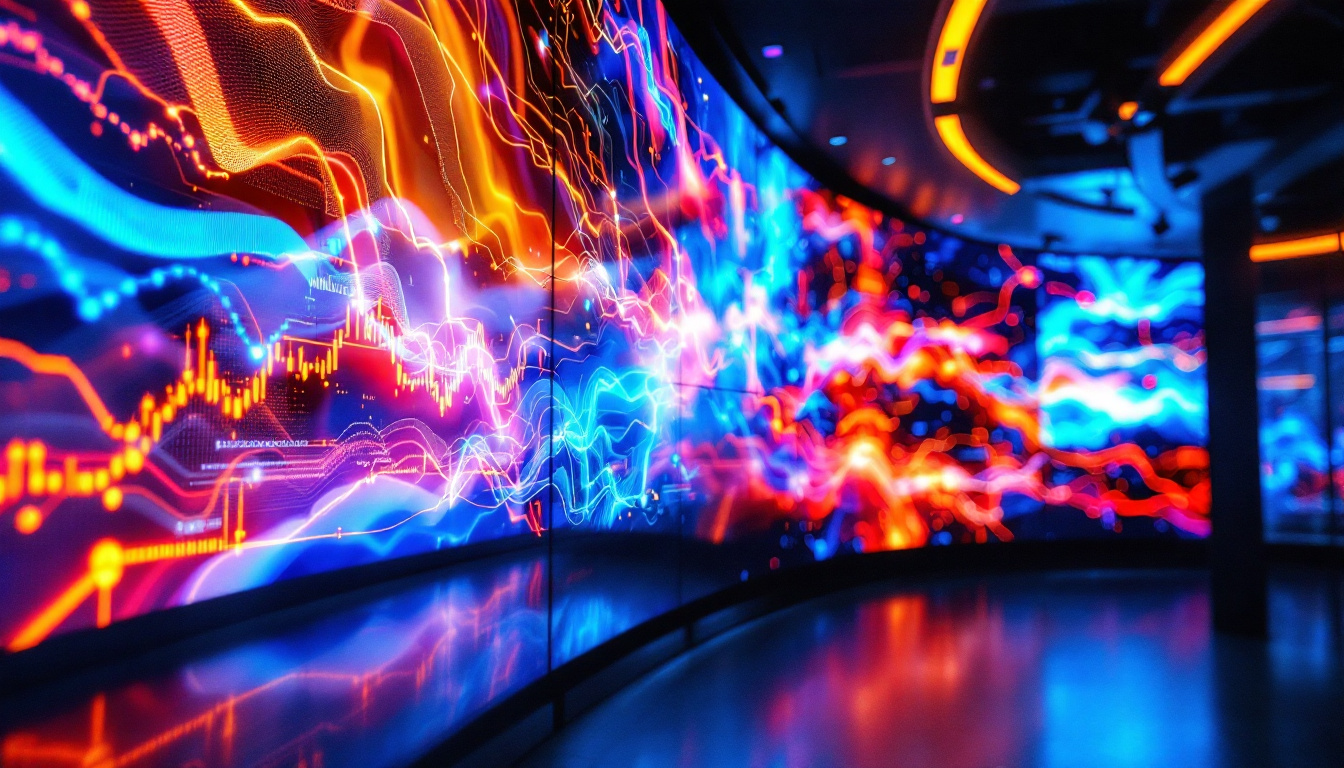In today’s digital age, LED displays have become a prominent feature in various environments, from corporate offices to entertainment venues. Understanding the mechanics behind these displays, including the essential brackets that support them, is crucial for anyone looking to utilize this technology effectively. This article delves into the intricacies of LED displays and the role of brackets in ensuring optimal performance and safety.
Understanding LED Displays
LED displays are a type of flat panel display that uses light-emitting diodes (LEDs) to produce images and videos. Their popularity stems from several advantages, including high brightness, energy efficiency, and the ability to create large, vibrant screens. These displays are commonly used in advertising, sports arenas, and public information systems.
The Technology Behind LED Displays
At the core of an LED display is a matrix of tiny LEDs that emit light when an electric current passes through them. These LEDs can be arranged in various configurations, such as RGB (red, green, blue), which allows for a full spectrum of colors. The combination of these colors at different intensities creates the images seen on the screen.
One of the key benefits of LED technology is its ability to achieve high levels of brightness, making it suitable for both indoor and outdoor applications. Additionally, LED displays are known for their longevity and low power consumption compared to traditional display technologies. This energy efficiency not only reduces operational costs but also contributes to a lower carbon footprint, making LED technology a more sustainable choice in an era where environmental considerations are paramount.
Types of LED Displays
LED displays come in several types, each designed for specific applications. The most common types include:
- Direct View LED Displays: These displays are made up of individual LED modules that create a seamless image. They are often used in large outdoor screens and billboards.
- LED Backlit Displays: These are LCD screens that use LEDs as a backlight. They are commonly found in televisions and computer monitors.
- Organic LED Displays (OLED): These displays use organic compounds to emit light and are known for their exceptional color accuracy and contrast ratios.
In addition to these common types, there are also specialized LED displays designed for niche markets. For instance, fine-pitch LED displays are engineered for close viewing distances, making them ideal for high-resolution applications such as control rooms or high-end retail environments. Furthermore, transparent LED displays are gaining traction in modern architecture and retail, allowing for eye-catching visual effects while maintaining visibility through the screen. These innovations showcase the versatility of LED technology, catering to an ever-evolving landscape of visual communication needs.
The Importance of Brackets in LED Display Installation
Brackets play a critical role in the installation and maintenance of LED displays. They provide the necessary support to ensure that the display is securely mounted and positioned correctly for optimal viewing. The right brackets can also facilitate easy access for maintenance and repairs. Without proper brackets, the risk of display misalignment or even damage increases significantly, which can lead to costly repairs and downtime.
Types of Brackets for LED Displays
There are various types of brackets available for LED displays, each designed to meet specific mounting needs. Some of the most common types include:
- Wall Mount Brackets: These brackets are used to mount LED displays directly onto walls. They come in various sizes and designs to accommodate different display dimensions.
- Ceiling Mount Brackets: Ideal for installations in areas where wall mounting is not feasible, ceiling mount brackets allow for displays to hang from the ceiling, providing a unique viewing angle.
- Floor Stands: These are portable solutions that allow for flexibility in display placement. They are commonly used for trade shows and events.
Choosing the Right Bracket
Selecting the appropriate bracket for an LED display involves several considerations. The weight and size of the display, the mounting surface, and the intended viewing angle all play significant roles in this decision.
Additionally, it is essential to consider the environmental factors, such as exposure to weather conditions for outdoor displays, which may require more robust mounting solutions. Consulting with a professional installer can help ensure that the right bracket is chosen for each specific application. Furthermore, the aesthetic aspect should not be overlooked; the design of the bracket can complement the overall look of the installation, enhancing the visual appeal of the display while maintaining functionality.
Another important consideration is the ease of installation. Some brackets come with adjustable features that allow for fine-tuning of the display’s position after installation. This can be particularly beneficial in settings where the viewing angle may need to be altered based on audience placement or lighting conditions. Moreover, the choice of materials used in the brackets can affect durability and longevity, with options ranging from lightweight aluminum to heavy-duty steel, each offering different levels of strength and resistance to wear and tear.
Installation Considerations
Proper installation of LED displays and their brackets is vital for ensuring safety and performance. Incorrect installation can lead to display malfunctions, damage, or even accidents.
Site Assessment
Before installation, a thorough site assessment should be conducted. This involves evaluating the mounting surface, checking for structural integrity, and determining the best location for visibility and accessibility. Factors such as ambient light and viewer distance should also be considered to optimize display performance. Additionally, it is important to assess the surrounding environment for potential obstructions, such as trees or buildings, that may block the view of the display. Accessibility for maintenance and servicing should also be a priority, ensuring that technicians can easily reach the display for future adjustments or repairs.
Tools and Equipment Needed
Installing LED displays requires specific tools and equipment. Commonly used tools include drills, levelers, and wrenches. Additionally, safety gear such as helmets and harnesses should be worn, especially when working at heights. It is also advisable to have a sturdy ladder or scaffolding on hand, particularly for larger displays that are mounted high above ground level. Furthermore, using a power supply tester can help ensure that the electrical connections are secure and functioning correctly before the display is powered on. Having the right equipment ensures a smooth installation process and minimizes the risk of accidents or damage to the display. Proper organization of tools and materials at the job site can also enhance efficiency, allowing the installation team to focus on the task at hand without unnecessary delays.
Maintenance of LED Displays and Brackets
Regular maintenance is essential for prolonging the lifespan of LED displays and ensuring they function optimally. This includes both the display itself and the brackets that support it.
Cleaning and Care
LED displays should be cleaned regularly to remove dust and debris that can affect image quality. Using a soft, lint-free cloth and appropriate cleaning solutions is recommended to avoid damaging the screen. It’s important to avoid using abrasive materials or harsh chemicals, as these can scratch the surface or degrade the display’s protective coatings. Additionally, cleaning should be done during cooler parts of the day to prevent streaking caused by rapid evaporation of cleaning solutions under direct sunlight.
The brackets should also be inspected periodically for signs of wear or corrosion, especially in outdoor installations. Any loose screws or bolts should be tightened to maintain stability. Furthermore, checking for signs of rust or deterioration is crucial, particularly in coastal areas where saltwater can accelerate corrosion. Applying a protective coating or paint to the brackets can help extend their life and maintain their structural integrity, ensuring that the display remains securely mounted and safe for use.
Professional Maintenance Services
While basic maintenance can often be performed by the user, professional maintenance services are recommended for comprehensive inspections and repairs. These services can identify potential issues before they become significant problems, ensuring the display remains in optimal condition. Technicians are trained to handle specialized equipment and can perform tasks such as recalibrating the display settings, replacing faulty components, and conducting thorough electrical inspections to prevent malfunctions.
Future Trends in LED Display Technology
The LED display industry is continually evolving, with advancements in technology leading to new possibilities and applications. Understanding these trends can help businesses and individuals make informed decisions regarding their display needs.
MicroLED Technology
MicroLED is an emerging technology that promises to revolutionize the LED display market. Unlike traditional LEDs, MicroLEDs are much smaller, allowing for higher pixel density and improved image quality. This technology is expected to lead to thinner, lighter displays with enhanced performance.
Flexible and Transparent Displays
Flexible LED displays are gaining traction, allowing for innovative designs and applications. These displays can be bent or shaped to fit various surfaces, making them ideal for creative installations.
Transparent displays are also on the rise, offering unique opportunities for advertising and information dissemination without obstructing views. These displays can be integrated into windows or glass surfaces, providing a modern aesthetic.
Conclusion
LED displays have transformed the way information is presented and consumed in various settings. Understanding the technology behind these displays, as well as the crucial role of brackets in their installation and maintenance, is essential for maximizing their potential.
As technology continues to advance, staying informed about the latest trends and best practices will ensure that users can make the most of their LED display investments. Whether for commercial, educational, or entertainment purposes, the right display and mounting solution can significantly enhance the viewer experience.
In conclusion, the synergy between LED displays and their supporting brackets is vital for achieving optimal performance and safety. By prioritizing careful selection, installation, and maintenance, users can enjoy the full benefits of this dynamic technology.
Discover LumenMatrix’s Advanced LED Display Solutions
Ready to elevate your visual experience with the latest in LED display technology? Look no further than LumenMatrix, a pioneer in crafting LED displays that bring your content to life. Whether you’re seeking to enhance your brand’s presence with an Indoor LED Wall Display, captivate passersby with an Outdoor LED Wall Display, or create a dynamic environment with our Custom and Transparent LED solutions, LumenMatrix has you covered. Embrace the future of visual communication and make a lasting impression with our comprehensive range of LED display modules. Check out LumenMatrix LED Display Solutions today and see your vision become a vibrant reality.

